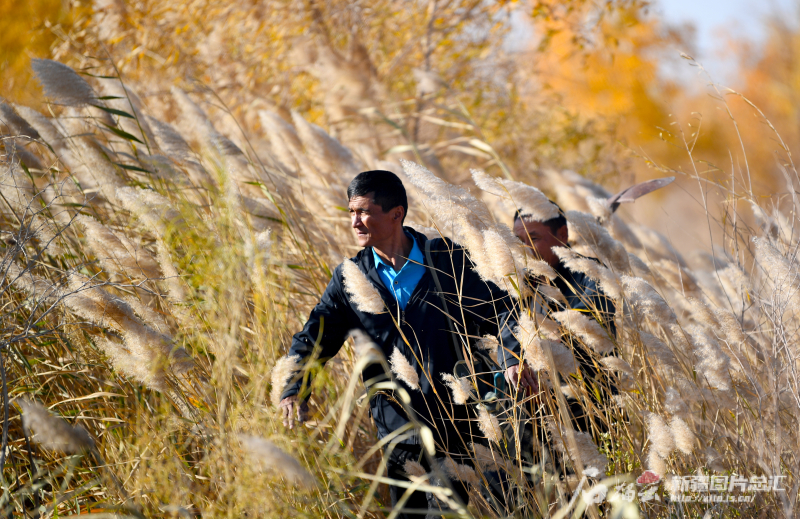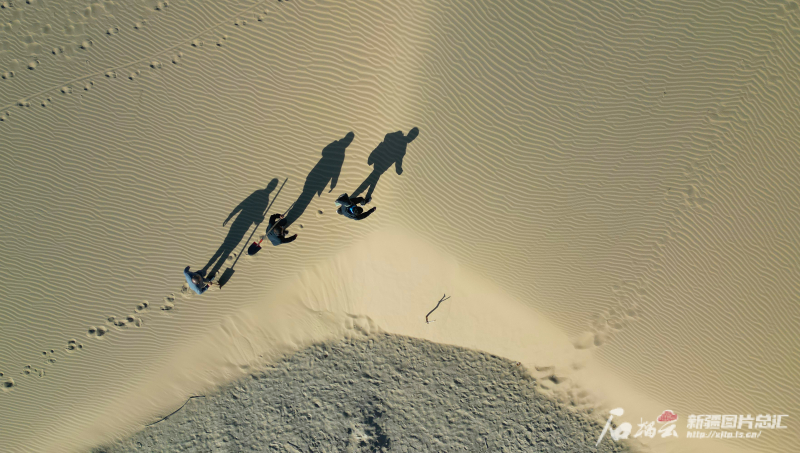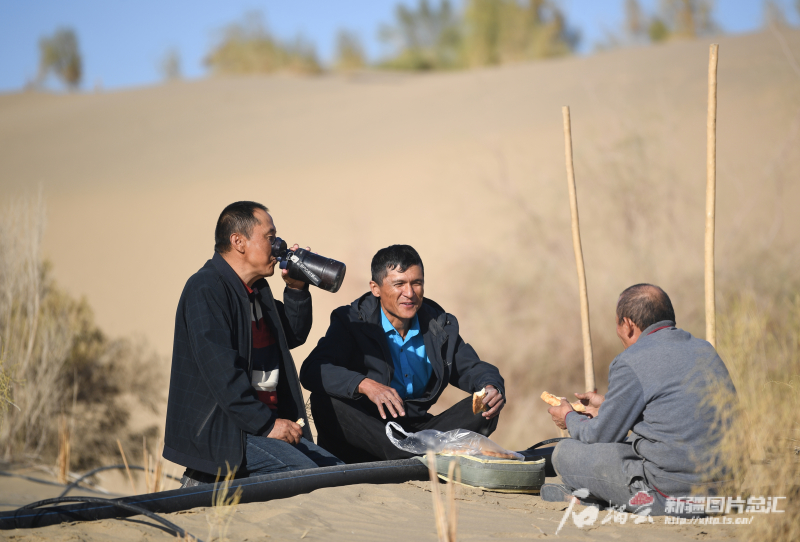
Photo taken on October 28, 2024 shows Kurban and his colleagues pass through reeds while on patrol in Qiemo County, northwest China's Xinjiang Uygur Autonomous Region.
Shiliuyun-Xinjiang Daily (Reporter Han Liang) news: "Once a year, the wind blows from spring to winter," said Kurban Rozi on October 28, 2024. This was a saying that once well-known in his hometown, Qiemo County, northwest China's Xinjiang Uygur Autonomous Region. Nowadays, through afforestation and sand prevention and control efforts, the dream of transforming sandy lands into an oasis is becoming a reality here.

Aerial photo taken on October 28, 2024 shows Kurban and his colleagues walk in the desert in Qiemo County, northwest China's Xinjiang Uygur Autonomous Region.
Qiemo County is located in the Hexi Corridor - the battlefront area at the edge of the Taklimakan Desert within the Three-North Shelterbelt Forest Program. The county is separated from the desert by only one Cherchen River. In 1998, after graduating from Hami Coal Mine Technical School, the 20-year-old Kurban chose to return to his hometown and join the newly established Qiemo Desertification Control Station.
When the Desertification Control Station was first established, it only had seven employees and faced extremely difficult conditions. Kurban and his colleagues had to walk more than ten kilometers on foot in the desert every day to carry out patrols. They built roads where there were no roads and bridges where there were no bridges with seven people and seven shovels, they worked hard for a month and finally built a five-kilometer-long gravel road and a simple bridge.

Photo taken on October 28, 2024 shows Kurban and his colleagues repair the drip irrigation tape while on patrol in Qiemo County, northwest China's Xinjiang Uygur Autonomous Region.
Victory in the first battle!
After that, Kurban and his colleagues began afforestation on the edge of the desert. Without electromechanical wells and irrigation facilities, they used buckets to fetch water from the river and water the trees trip after trip.

Photo taken on October 28, 2024 shows Kurban and his colleagues have lunch while on patrol in Qiemo County, northwest China's Xinjiang Uygur Autonomous Region.
Over the years, with the widespread application of technologies such as drip irrigation and water-saving measures, the working conditions at the Desertification Control Station have greatly improved. With the support of scientific and technological methods for sand control, the Desertification Control Station has expanded its sand control and afforestation area at a rate of thousands of mu per year.

Photo taken on October 27, 2024 shows Kurban looks for a mobile phone signal outside the temporary camp in Qiemo County, northwest China's Xinjiang Uygur Autonomous Region.
Over the past 26 years, through the joint efforts of the Desertification Control Station and people of all ethnic groups in the county, Qiemo County has planted trees on 129,000 mu (about 8,600 hectares) of land on the edge of the desert. These trees, like a green shield, have effectively curbed the erosion of the Taklimakan Desert. Nowadays, the local ecological environment has been significantly improved, with the number of dusty days reduced by 31 percent and rainfall increased by 17 percent annually.

Photo taken on October 26, 2024 shows Kurban and his family enjoy a leisurely stroll along the Yuquan River landscape belt in Qiemo County, northwest China's Xinjiang Uygur Autonomous Region.
In November 2023, Kurban was awarded the honorary title of National Model in Desertification Prevention and Control.
(A written permission shall be obtained for reprinting, excerpting, copying and mirroring of the contents published on this website. Unauthorized aforementioned act shall be deemed an infringement, of which the actor shall be held accountable under the law.)









